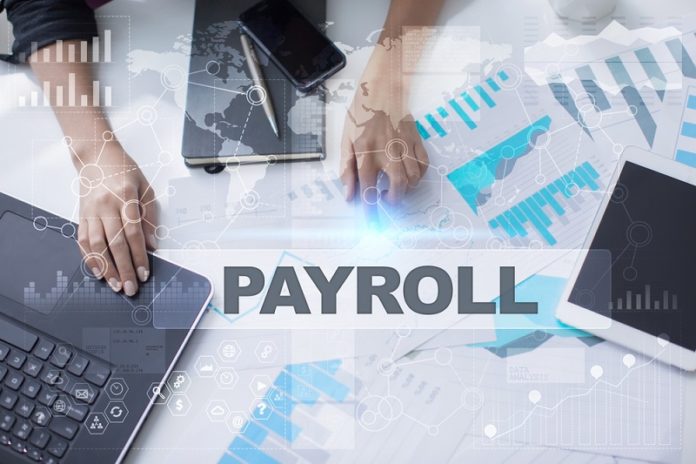You’re going to make mistakes as an employer. Heck, I know I have. One thing you don’t want to do? Miss a payroll.
Some of your employees might be part of the 56% of Americans living paycheck to paycheck. If they are, they count on that money to be in their bank accounts or hands on payday. Not to mention, failing to pay employees on time may be illegal in your state.
What’s an employer to do? Just hope you pay your team on time? Nah. There are a number of payroll schedule “hacks” that’ll help you to pay employees on time, every time.
Payroll schedule hacks
When I say payroll schedule hacks, I’m talking about equipping yourself with the know-how you need to pay employees on time. Use these five tips to make it happen.
1. Use a reliable system
You can run payroll a few different ways. You might opt for one of the following:
- Doing payroll by hand: Least expensive, most time-consuming option
- Outsourcing payroll to a professional: Most expensive, least time-consuming option
- Using payroll software: Middle ground that lets you quickly handle payroll without breaking the bank
By using a consistent system, you can stay organized and get a firm grasp on your payroll responsibilities, like when to collect timesheets and process payroll.
One more word of advice: Sometimes, the unexpected happens (remember that whole MyPayrollHR debacle?). Make sure the software or professional you’re using to run payroll is reputable. Check online reviews, see how long they’ve been in business, and find out how many customers or clients they have.
2. Give employees the schedule ahead of time
More than likely, your team knows how frequently they get paid. When onboarding a new hire, you typically tell them which pay frequency you use:
- Weekly (52 paychecks per year)
- Biweekly (26 paychecks per year)
- Semimonthly (24 paychecks per year)
- Monthly (12 paychecks per year)
To make things easier, you might distribute a schedule at the beginning of the year. That way, employees know which days they can expect to receive their paychecks. And, they won’t be playing a guessing game when it comes to banking holidays.
Which brings us to my next payroll schedule hack…
3. Watch out for banking holidays
Even the best-laid plans can go wrong if you’re not watching out for curveballs. Take federal banking holidays, for instance. If payday falls on or around a banking holiday, your employees won’t receive their wages on time—unless you take action.
Don’t want a banking holiday to mess up your payroll plans? You can either run payroll earlier or expedite payroll. If you run payroll earlier, you need to collect timesheets earlier. And if you expedite payroll, you’ll likely need to pay a fee.
Also, look at your payroll schedule at the beginning of the year, determine if a holiday could impact any of your payrolls, and set alerts.
If you use payroll software, your provider should notify you that there’s an upcoming banking holiday.
4. Set reminders
Being an employer is just one part of being a business owner. And as a business owner, you have a lot on your mind.
So whether you’re using software or not, it doesn’t hurt to set reminders. That way, you know exactly when to collect timesheets, run payroll, and pay employees. And again, set reminders for curveballs, like federal banking holidays.
You can set an alarm on your phone, watch, or computer; put up Post-it Notes; create a recurring calendar event ahead of time; or mark your calendar the old-fashioned way.
5. Manage your cash flow
My final tip for sticking to your payroll schedule revolves around having enough money to actually run payroll and pay your employees. To do that, you need to manage your cash flow and expect the unexpected.
Take a look at a few reasons cash might be tight at your business and what to do about it:
- Three-paycheck months: In a biweekly frequency, there are two three-paycheck months per year. Budget for these extra paychecks to make sure you have enough money to pay your employees on time (and who doesn’t want that?).
- Customers not paying: If your customers aren’t paying their bills from your business, you could struggle to pay your own bills. Make your invoices clear, offer early payment discounts, and send frequent reminders to customers with overdue payments.
- Natural disasters and other emergencies: Whether it’s a hurricane or COVID-19 that forces you to close up your business for a bit, your cash flow could take a serious hit. Prepare for these types of curveballs by setting up and contributing to an emergency cash reserve.
Of course, there are plenty of other ways to manage your cash flow and make sure you have enough money to pay employees. You can:
- Cut back on expenses
- Create a separate payroll bank account
- Boost sales through discounts and promotions
- Apply for a small business loan or line of credit
Mike Kappel is a serial entrepreneur, and the founder and CEO of Patriot Software Company, and its subsidiaries. Patriot Software, LLC is a developer of online accounting software and payroll for U.S. business owners and their accountants.
Pay time stock photo by Wright Studio/Shutterstock







